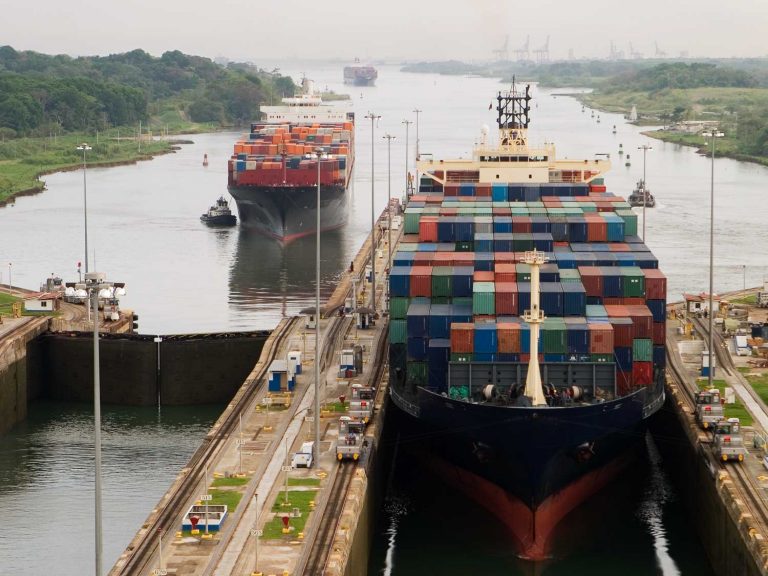
Date:
Sustainability key to long-term Panama Canal
With 5% of global maritime trade and 40% of US container traffic using the Atlantic-Pacific shortcut, the Panama Canal is a critical link in global supply chains and the drought-driven disruption which started last year is finally relenting, with the key waterway expected to be operating at full capacity by September.
In the first 10 weeks of the year, nearly five million TEU left the Far East for the USA, an increase of 16% compared to 2023, with lines increasing capacity by 24% to meet demand and with capacity for the East Coast up 15% the Canal’s operational capacity is critical.
The Panama Canal transports ships 26 metres above sea level across the mountains and unlike the Suez Canal is reliant on fresh water, but lack of rain and the El Nino weather phenomenon have contributed to the second driest year in the canal’s 110-year history.
Since last summer the Panama Canal Authority (ACP) has had to introduce water-saving measures, which has meant fewer ships can pass through the canal each day, eventually cutting transits by over a third.
Deputy Administrator Ilya Espino de Marotta was appointed as the Panama Canal’s first Chief Sustainability Officer in January, emphasising their ongoing commitment to sustainability.
Ms De Marotta has said that the rainy season starts in late April to early May and they are hoping to increase transits to 34 by the end of May, returning to the normal 38 transits by September.
The ACP is looking to ensure that the restrictions in place since last summer and the subsequent delays will not be repeated, with projects currently underway to ensure reservoir levels are stabilised for the coming year, including the reuse of water from one lock chamber to another, which is saving the equivalent of six daily crossings.
The authority is also considering building reservoirs, its first major project since it completed the new set of locks in 2016.
Another option is to build desalination plants, but it is costly and requires a huge amount of energy. Even seeding clouds to create more rain isn’t off the table and in the medium term ACP is proposing an additional lake, so water levels can be maintained and add between 11 and 15 passings each day, elevating daily transits to around 50.
The project is reliant on government approval and the existing Panamanian government is not supportive, but in May Panama is holding a general election and the ACP is optimistic that the new administration will ratify the project.
If you have any concerns relating to the Panama Canal or your transpacific trade, we can review your situation and outline your options, including road and rail transhipment, and alternative carriers, ports and routes.
Whatever your challenges, our long-term ocean carrier relationships deliver cost-effective, resilient and reliable ocean solutions. EMAIL Andrew Smith, Chief Commercial Officer to learn more.
